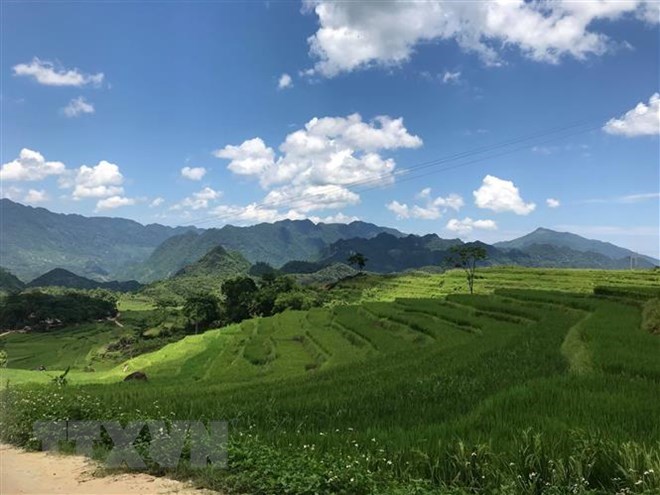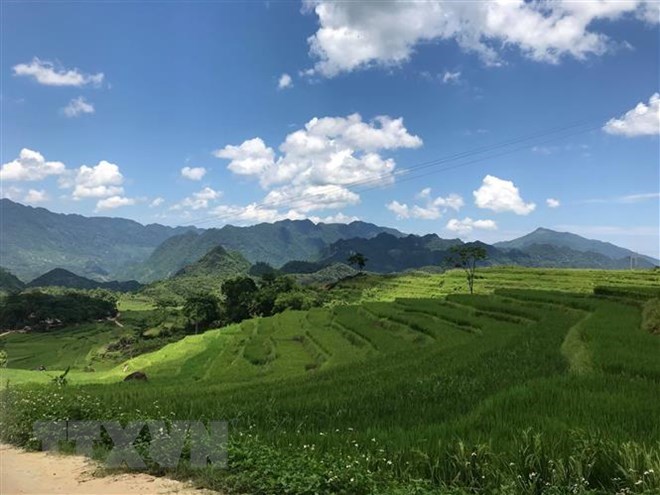
A number of community-based tours made their debut in Don hamlet, Thanh Lam commune, Ba Thuoc district of the central province of Thanh Hoa on October 19.

An eco-tourism site in Thanh Hoa (Source: VNA)
Pu Luong is a nature reserve established in 1999 with its area
covering Ba Thuoc and Quan Hoa districts. It is considered as a valuable
natural reserve for science research, socio-economic and ecotourism
development.
The tours offer visitors activities to discover local primeval forests,
waterfalls, rivers and mountains.
They can also participate in traditional festivals of the locality, visit
traditional trade villages, enjoy local specialities and experience daily
activities of locals, especially those from ethnic minority groups.
Visitors can take one-day tours in Pu Luong, or two-day tours across three
districts of Ba Thuoc, Quan Hoa and Lang Chanh. There are also tours going cross
Hoa Binh province to Ba Thuoc.
Chairman of Ba Thuoc district People’s Committee Lo Van Thang said the
development of community tourism is hope to assist with poverty reduction,
raise income and improve the livelihood of local residents, thus contributing
to bolstering the locality’s socio-economic development.
He highlighted the significance of the launch of community-based
travel tours in the locality, saying that this will help attract more
holiday-makers to the locality.
Ba Thuoc hopes to create a breakthrough in tourism development, Thang said,
adding that the locality has set a goal to welcome 30,000 visitors by 2020, of
which about one third being international tourists.
In recent years, Ba Thuoc district has focused on upgrading infrastructure in
many tourist destinations. It has also enhanced promotion of community tourism,
restored many traditional cultural activities, in connection with conserving
and developing intangible cultural values and training human resources for the
tourism sector.
Source: VNA
A diverse chain of eco-tourism and resort destinations concentrated in Hoa Binh city and the districts of Tan Lac, Da Bac, and Luong Son… Along with the launch of several key high-quality resort tourism projects, these developments have reshaped the landscape and enhanced the appeal of Hoa Binh as a travel destination.
Boasting diverse terrain, a mild climate, and rich natural resources, Cao Phong district is increasingly asserting its place on Vietnam’s tourism map, attracting both domestic and foreign visitors. The district is renowned for its stunning landscapes, majestic mountains, a crystal-clear hydropower lake, and the unique cultural identity of local ethnic groups.
With its pristine landscapes, unique cultural heritage of Muong ethnic minority, and an expanding range of visitor experiences, Tan Lac district of Hoa Binh has fast become a captivating destination for both domestic and international tourists.
Until now, Sung village in Cao Son commune, Da Bac district remains the only Dao ethnic community in Hoa Binh province to develop a community-based tourism model. Beyond its untouched natural landscapes, cultural identity serves as the cornerstone attraction for visitors.
Alongside the diverse cultural identities of the Kinh, Muong, Tay, Thai, Dao, and Mong ethnic people, Hoa Binh province is also renowned as the "capital" of the northwestern Vietnamese cuisine, offering unique and distinctive dishes. At festivals, during Lunar New Year (Tet), or on significant family or community occasions, special dishes are prepared, leaving a lasting impression on visitors.
A Phong Linh (Yellow Tabebuia) flower garden in Thang village, Thach Yen commune, Cao Phong district is currently in full bloom, drawing a large number of visitors.



